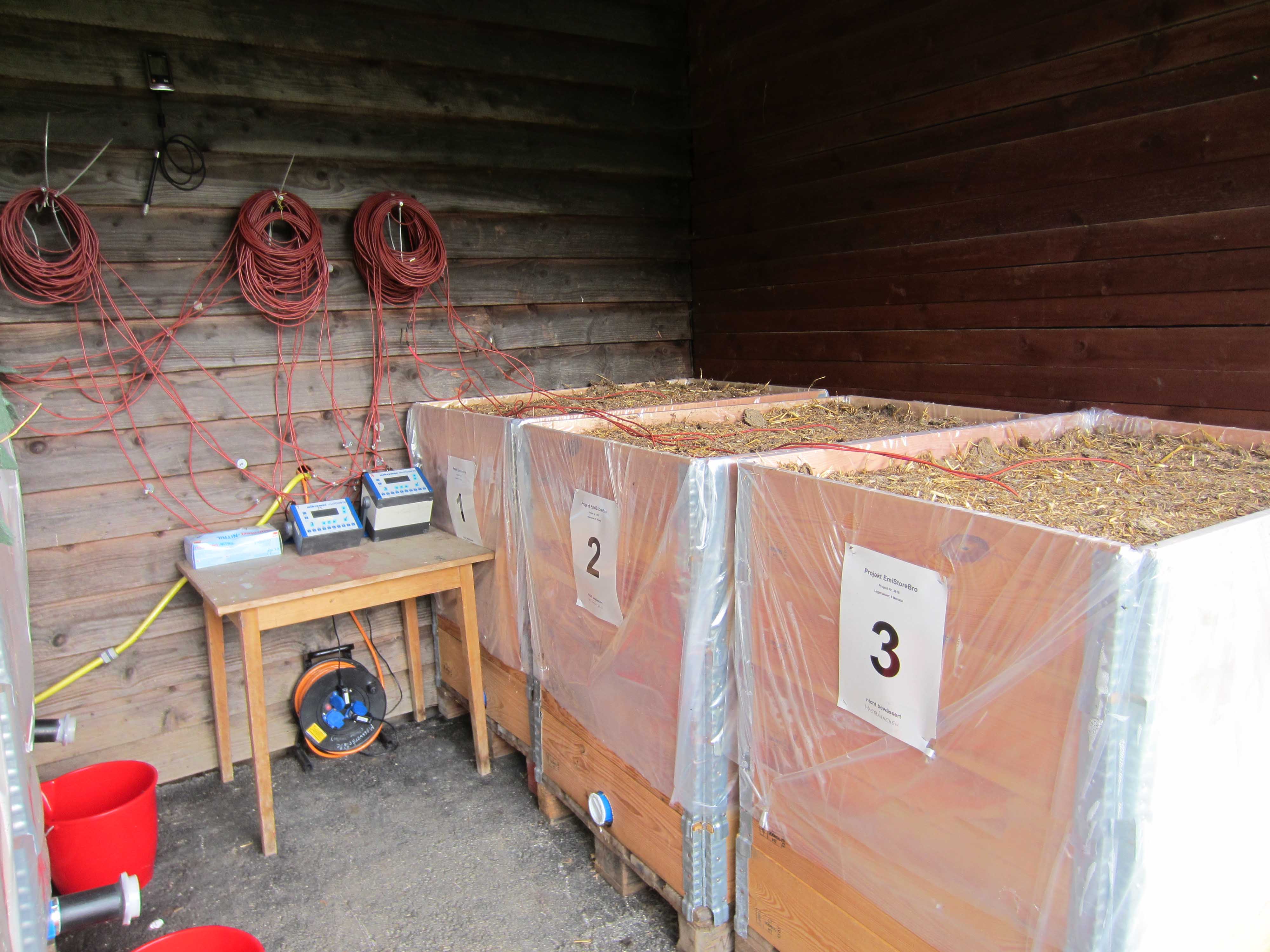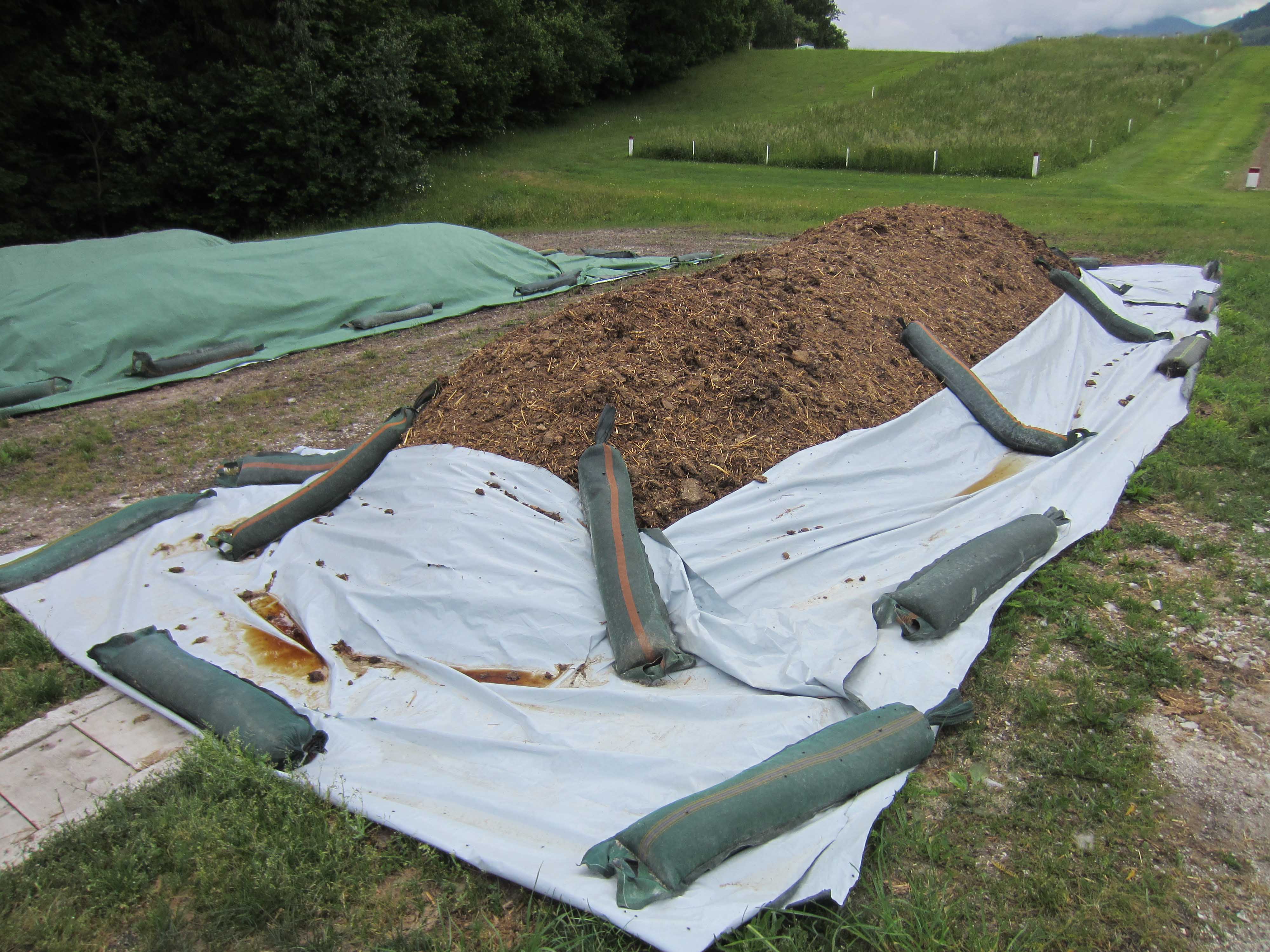Experimental design
In the first experimental approach (first year of the experiment), broiler manure was stored under a roof in 1m³ boxes. The boxes had walls on four sides and were only open at the top. Precipitation was simulated by emptying the appropriate amount of water over the open box using a watering can once a week. At the foot of the box there was an outlet through which the resulting seepage juices could escape and be measured.
In the first year of testing, the following variants were examined with three repetitions:
- 3x broiler manure under roof
- 3x broiler manure under roof irrigated with 800mm annual rainfall
- 3x broiler manure under roof irrigated with 1600mm annual rainfall
The storage period was around 9 months.
In the second year of the experiment, two broiler chicken storage experiments (under a roof, 800 mm) were repeated and the third variant, “laying hen manure stored under a roof,” was included in the experimental design.
- 3x broiler manure under roof without fleece
- 3x broiler manure irrigated under roof with 800mm annual rainfall covered with fleece
- 3x laying hen droppings under roof without fleece
In addition , three large outdoor storage piles were created on a storage slab with a seepage collection channel as well as a broiler house manure pile with and without and a laying hen manure pile with a compost fleece cover.
- Outdoor storage, laying hen manure with fleece – annual rainfall total 1009mm*
- Outdoor storage, broiler droppings with fleece - annual rainfall total 1009mm*
- Outdoor storage, broiler droppings without fleece - annual rainfall total 1009mm*
* Data from the Irdning-Gumpenstein weather station for the normal climate period 1961 - 1990
In order to better evaluate the data obtained, manure samples from practical farms were collected, analyzed and compared with the experimental data.
Emission measurements to determine ammonia emissions were only carried out on two days with a short time interval.
Results
The nutrient losses were calculated based on the amount and nutrient loads of the seepage juices. In the “under roof” storage variants without irrigation, no seepage occurred.
The variants with simulated precipitation showed considerable nutrient losses in the form of nitrogen and potassium. With the 800 mm rainfall variant, the broiler manure lost 2.27 -2.83 kg; In the 1,600 mm version there were 7.6 kg of nitrogen losses due to seepage juices/ton of fresh matter.
During the outdoor storage tests, nitrogen losses of 0.98 kg were measured for broiler manure without a fleece cover and 0.04 kg for the broiler manure variant with a fleece cover. The laying hen manure variant with a fleece cover resulted in losses of 0.11 kg nitrogen/ton of fresh mass. The significantly lower leaching losses when storing broiler manure in field piles compared to the “artificially irrigated storage variant” are probably due to the “buffering effect” of the broiler manure. More mass can also absorb more water, and therefore fewer nutrients are lost through seepage. The emission measurements showed a clear connection between the under-roof storage variant and the irrigation variants. The latter showed a significantly higher outgassing potential. These results allow the following conclusions:
- Laying hen droppings should always be stored under cover.
- If possible, broiler manure be stored under cover in areas with annual rainfall greater than 500mm annual rainfall For outdoor storage in the form of field piles, covering with compost fleece definitely sense.












